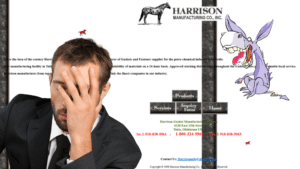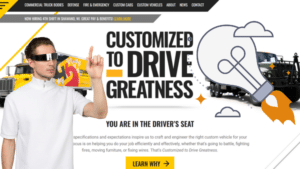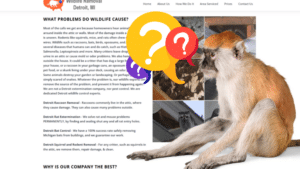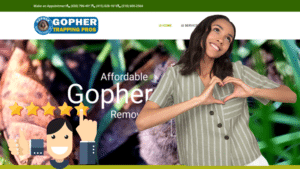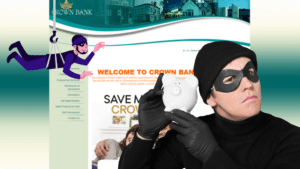Give Your Marketing Plan More Bang For Its Buck In 8 Steps
To help you on the road to a profitable marketing plan, we’ve created a simple 8-step process to get you started.
Creating a marketing plan isn’t easy…but it can be easier than a lot of people make it out to be.
To help you on the road to a profitable marketing plan, we’ve created a simple 8-step process to get you started.
There are a lot of resources out there that talk about this, so why should you use this one?
Because there are a lot of resources out there!
There are so many, it can be a little overwhelming. So, we consolidated some of the best resources from around the web to make it easier for everyone to create their own profitable marketing plan.
When we set out to create this process, there were a couple of design principles that motivated us. Those design principles will help make it as productive (maybe even a little more productive) than some of the other approaches that are out there.
This process is intended to be:
Modular: It’s intended to be broken down into small pieces, and those small pieces can be used in other places.
Iterative: You can take each piece of the process, and iterate on it and use it for multiple product lines, service lines, and different kinds of campaigns.
Simple: Creating any kind of content or any kind of strategy takes time. That’s why frameworks are so helpful. They simplify that process and make it easier to focus attention and effort in really concrete ways, and the more complex something is the less likely it is to get done.
Scalable: This was designed so that it can be used in any number of ways internally. We use it both for individual campaigns as well as whole service or product lines that we’re working on. It scales all the way from the company level down through the unit product and service level so it’s intended to be scalable, for any number of different approaches.
Clear: Like any other plan, it will need to be communicated and implemented at some point so it needs to be clear and easy to explain.
Making sure this process covers all these bases ensures that you’re like a conductor giving sheet music to different members of the orchestra, it could be taken and implemented easily by anyone who looks at it, no matter what instrument they play.
These are the steps we will cover.
The 8 Steps to Boost Your Marketing Plan:
- Get clear on your ideal customer
- Expand your market(ing)
- Communicate clearly, persuasively, & succinctly
- Craft profitable campaigns
- Create the right content
- Blog
- Optimize for Search
- Attract, retain, & nurture leads
You may use one or all eight of these for any given campaign or initiative…that’s what we’ll dive into next.
So, how should you use this plan?
How To Use The Plan
- Start at page 1, go in order
- Colored blocks are designed to be re-used
- Use page 1 and 3 before every initiative
- Print & share pages as needed
While you’ll get the most mileage if you go in order, the colored blocks cascade throughout and make it really easy to say, okay, if I’ve done this, I don’t have to redo it later on.
This plan can be used for a business unit or company level or specifically for an individual product or campaign.
The goal was to make each page stand-alone, as well as work together as part of an overall system.
So, let’s dig into the steps.
1. Get Clear on Your Ideal Customer
The foundation of any viable business or marketing plan is customer clarity.
At the end of the day it’s our customers who pay our bills, and it’s the customers that we try really hard to serve. And so, that’s the starting point of the approach.
That said, one of the mistakes we see a lot of business owners make, and lots of companies making, and one we’ve made ourselves, is not distinguishing our customers.
When thinking about your ideal customer, consider:
- How much you like working with that customer
- How much value they place on your work
- How profitable they are
Ideally, you want to attract your best kind of customers (and in a different video we’ll talk about this).
Once you have an idea of your best customer, make sure to document these things about them:
- Personal demographics
- Professional demographics
- Their goals
- Their fears
- How they make decisions (Behavioral triggers)
- What technology & tools they use (or don’t)
- Where they can be found on/offline (Channel)
- What relevant products & services you have for that customer
So once you’ve thought about your ideal customer, you need to create a system that attracts more and more of those kinds of customers. You might have several different kinds of customers you want to attract and you might have different types of products and services that are relevant for different kinds of customers.
For example, our customers who want blogging aren’t always the same kind of customers who want our website maintenance and management services.
We run different kinds of campaigns and you want to run different kinds of campaigns to attract those different kinds of audiences and different kinds of customers.
What’s great about this process, and this is where you’ll see some of the modularity, is that you can create one of these for each kind of customer. The temptation might be to pick one kind of customer. But, in fact, you might have three or four different kinds of personas internally (we have a handful of different ones) and you want to create one of these for each type of customer.
2.Expand Your Marketing
Marketing and promotion are often used interchangeably.
That’s a mistake.
Promotion is about what and how your marketing messaging will be communicated.
Marketing encompasses the whole value chain of your business, including:
- What you produce
- Why
- For whom
- For how much
- And where & how that’s communicated
If you were to go to business school or read a lot of business books, they would talk about marketing as the four P’s; Price, Product, Promotion, and Place.
Marketing encompasses an entire value chain, not just the communication of a message so it’s important to keep that in mind as you think about your marketing plan. So the template we’ve created is there to help create a marketing plan that:
- Empathizes with customers: It’s targeted towards an ideal customer you’re trying to attract, as well as their wants and needs, and really geared towards how you solve their problems.
- Can be profitably executed: This means you come up with channels to reach those customers or those prospects, with relevant services, and in a profitable way.
- Extends value and gets referrals: You want to be thinking through how you deliver a great experience, how you increase lifetime value, and then how you stimulate referrals
As you can see, we’re not talking about promotion we’re really talking about who you’re trying to help, and how you do it in an economically viable and sustainable way.
This marketing plan gets us thinking more broadly than just to use Facebook or Google or Twitter or whatever, it’s really bigger than that.
3. Communicate With Story Brand
If you haven’t ever read Donald Miller’s Story Brand, he totally gets it.
As we thought about synthesizing this within a broader framework, it just became clear it was so good on its own. This part of the plan is really going to be just an interpretation of his great work.
One of the primary goals of business communication is really to influence movement of another person effectively. That means speaking in a language that’s easily understood by your ideal customer, respects their time, and motivates action.
You really want to enter the conversation going on in their head, and then help turn that attention towards your offer and your ability to help.
And the story brand communication plan really does a good job of trying to enter that conversation.
There are nine parts to it:
- What the ideal customer needs & wants
- Considers how they frame problems
- Demonstrates empathy & authority
- Offers a clear path forward
- Invites that customer to action
- Acknowledges the reality of failure
- Encourages with the promise of success
- Plans for an overarching transition
- Communicates succinctly.
4. Craft profitable campaigns
Once you know who you’re talking to, why, and what you want to communicate, you can start testing channels. That’s what the One Page Campaign Plan is for.
A question and statement we always hear (and sometimes say):
- How much will it cost?
- Of course, I’ll invest more if it works
But think about it like this, if a campaign is profitable, there should be no budget. If it’s not profitable, it shouldn’t be done. The challenge is, you have to know if your campaign is profitable.
So, don’t think of the money you’re putting in as your budget, think of it as Risk Capital.
To start a campaign, know how much you’re willing to lose before you see a return, as well as what you’re measuring to quantify “return.”
For example, if you put $1 in and I get 80 cents out, you might need to say, “Okay, why am I getting 80 cents out? Was the copywriting bad was the offer bad? Was the audience the wrong audience for the message?” You should have some sense for that gap, and you should be ready to say that you’re willing to put up $1,000 or $5,000 or $10,000 before you see a profit in order to test or understand what it’s going to take to start putting $1 in and getting $1.50.
Those expectations need to be aligned with the kind of campaign that you’re running in the first place.
For example, if you’re doing Google Pay Per Click ads, with a strong bottom of the funnel offer, you know to buy now or to convert that’s different than if you’re running ads on Facebook, and just trying to get impressions, you shouldn’t generally expect to see conversions equal sales.
If you’re running display ads you should be measuring things like impressions, in which case, putting $1 in won’t yield $1.50 out.
You need to know what exactly it is you’re trying to measure, and that’s what risk capital is for.
There are 3 parts to running a successful campaign (in any channel):
- Prospecting: Making sure that you’re aligning the campaign goal with the appropriate ideal customer message and channel.
- Conversion: Providing a relevant or appropriate offer that nurtures that prospect, and then turns them into a conversion.
- Assessment: Given the goal, what metrics should you be watching and what artifacts do you need to be able to create in order to be able to make the campaign successful? What were your results?
All three of these together need to be considered in order to know whether or not the campaign is successful and certainly whether or not it’s profitable.
5. Create the Right Content
If you want to be helpful to customers and rank in search engines, you have to be a content producer. Thankfully, once you’ve completed the first 3-4 parts of this workbook, the Content Plan becomes much easier.
Once you know who you want to attract, what their problems are, how they try to solve them, and how you plan to communicate to them, your content plan fills in the gaps.
Within your content plan, you want to be thinking about:
- Your ideal customer (From Page 1)
- Their problems (From Page 3)
- How they try to solve those problems
- What obstacles they’ll encounter
- What they need to know in order to overcome those obstacles
- What they search for try and solve their problems
- Then, that information can be turned into Content Themes, Blog Posts, and Lead Magnets
Note: Not all content needs to be “blog” content. Think about your ideal customer and what they need/want to hear. “Content” for you maybe videos, social posts, Lives, or a collection of the above.
Anything that you produce to communicate in line with your marketing plan to attract your ideal customer is content.
6. Blog
For most businesses, a blog is the primary type of content created and the best SEO path forward.Once pages 1-5 are created, the “Blog” plan is just about getting the ideas generated onto paper.
One thing to keep in mind is making sure that, as you create content, that you keep in mind the different stages of of the buyers journey:
- Awareness
- Consideration
- Evaluation
You should create content targeted to different keywords, with different topics and target those topics toward different stages of the buyer’s journey.
7. Optimize for Search
Nearly everyone asks us “how do I rank in Google?”
The One Page SEO Plan helps you figure out how to get each post ranked.
There are 6 parts to the plan:
- Content focused on your ideal customer
- Profitable Focus Keywords
- Relevant ancillary keywords
- Clarity about your competition
- Competitive content
- A plan to get shares & backlinks
We’ll help you figure out what kind of content you need to create for your blog to be competitive and what kind of backlinks you need to get and how you’re going to get that content shared.
8. Attract, Retain, & Nurture Leads
Finally, content upgrades are an optional tactic to get prospects into your pipeline.
The idea is to provide great content with supplemental, supportive, or bonus content available in exchange for contact information.
Once someone provides their contact information, share the resource(s) with them and then follow up.
Content upgrades are optional.
Actually all of these are optional. For instance, if SEO isn’t an important part of your marketing, then you don’t need to worry about creating SEO plans. If blogging is not an important part of your marketing strategy, then don’t spend time on this. It’s really intended to be whatever you need it to be.
A content upgrade is really about trying to gather contact information and then sharing resources and following up. For instance, this workbook itself will have a link to download the workbook and in exchange for that, so we can make sure it gets to you, we will ask you for your email address and then we will probably have some kind of follow up sequence that will ask your feedback or invite your feedback on the quality of of the workbook and the courses that we’re putting together to help improve our marketing strategy.
No Plan is Perfect
No plan is perfect, but this approach creates a system that allows for flexibility, scalability, and simplicity.
As you go through each individual page, you might find that the whole plan at first seems daunting but each individual page is stuff you can do. And as you do page one, you’re like, “Okay that’s pretty easy. I can do page two.”
With this plan, the goal is to do the work once, and then see it become profitable, or productive rather, in other pages down the line. And that’s part of the goal of making this thing modular and helpful.
It will evolve as your business & technology evolve.

